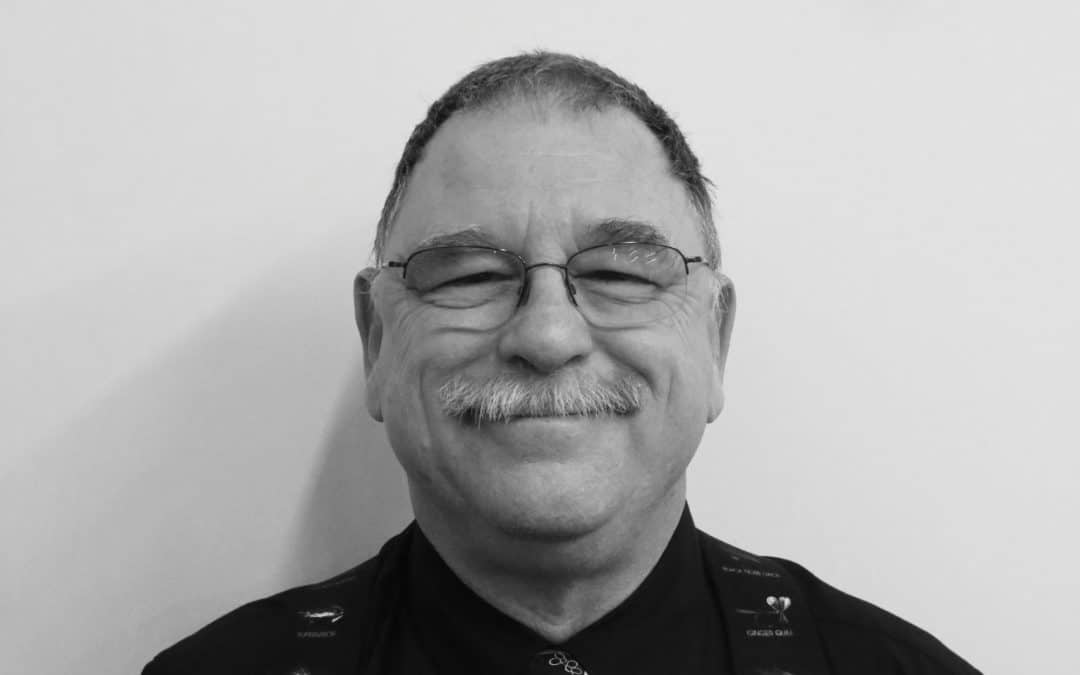
by Erin Long | Oct 2, 2019 | Hidden from Archive
Who remembers the Pepsi Challenge? It was an old Pepsi television commercial. A blind taste test where People were offered a taste of Pepsi and Coke, and then asked to choose which one they liked better. Being a Pepsi ad, it was not surprising that everyone chose Pepsi. But I really can’t tell much difference between the two products. In a glass they both look the same, fizz the same, and they both taste like cola. It’s my opinion if you performed the same blind taste test using RC cola and Faygo cola, and asked people to choose which one was Pepsi and which Coke, they would choose between the two believing one was Pepsi and the other Coke. No matter what the big soft drink giants want you to believe, cola is pretty much the same product no matter what color the can is.
I used to believe the same was true about dust collection equipment. I began my career working for a large industrial sheet metal contractor. We designed and installed industrial dust collection systems across the country. That was our focus. But we did not make a dust collector. The reason for that was simple. The dust collector manufacturers were bringing work to us. Since we did not build a dust collector, or show favoritism of one brand over another, we managed to keep most of the manufacturers in our court. It was not unusual for us to be installing a system on the east side of town using a Coca Cola collector, and a system on the west side using a Pepsi Cola collector. And if a customer specified an RC Cola collector, we were fine with that too. Everybody had their favorite vendors. But when push came to shove, and I had to solicit dust collector pricing for a system, I got quotes from them all. Since they all claimed equal performance and features, I would select the lowest price collector for my system. We were more concerned about the system design, fabrication, and installation. The dust collector was just a metal box with filters in it at the end of the system. It didn’t matter to me if it was a blue box, a red box or a green box.
In 2008 the Imperial Sugar Explosion in Georgia changed all that. 14 deaths and 40 injured put a nationwide spotlight on dust collection systems. NFPA codes changed from suggested guidelines to enforced rules. A lot of consideration had to be given to the dust collection equipment selected. Corporate safety personnel were becoming more conscious and educated regarding the potential of dust-related explosions. Dust collector fabricators were trying to adhere to increasingly stringent safety codes. And sheet metal contractors like us who specialized in dust system design had to know the features of the dust collectors we were offering. Pmax, Pred and KST values were becoming a part of every discussion regarding the dust collection system design. Things like vessel strength, vent size, internal velocities, explosion venting, and flame suppression are just a few of the features that must be considered when selecting a safe, NFPA compliant dust collector.
My career took a change in 2010 when I began my employment with Imperial Systems. Although we are primarily a dust collector manufacturer, we also do turnkey system installations. I was not hired for my knowledge of dust collection equipment but for my strength in system design. I admit when I started with Imperial Systems, I still had a good bit to learn about dust collector equipment. And I have learned a lot. At Imperial Systems we are very proud of the quality and features that go into each one of our CMAXX dust collectors. We began as another “Want-To-Be” cartridge dust collector manufacturer and we made a few mistakes along the way. Our first collector design was not much more than a “cookie-cutter” version of what was already on the market. We were no different from the guys offering the blue, red, or green boxes. We realized offering another “Me Too” collector did nothing to set us apart from the more established brands. We looked for ways to improve our collectors, and it’s the CMAXX differences that set us above the competition and became our greatest strength.

The CMAXX collector’s 7- and 10-gauge construction makes it the strongest build collector on the market today. Then we made it even better by blowing it up. In fact, we blew it up several times to test its structural integrity and strength. The CMAXX collector was tested by an independent agency and proven to contain explosive pressures exceeding 4 PSI without damage or deformation. Our proprietary In-Line Deflagration IDA filters were also tested and proven to stop a flame front resulting from an explosion from passing beyond the filter chamber. The CMAXX housing is 20% larger that our nearest competitor resulting in lower can and interstitial velocities. Combining that with our vertical filter arrangement means better cleaning efficiency, longer filter life, higher performance, less maintenance, and greater energy savings. And the CMAXX is the only modular design dust collector on the market with no external bolt holes. That along with our Crown-Tech roof design makes it possible for us to offer the industry-leading 15-year warranty. The military-grade door latches, manifold mounted pulse valves, and “Even-Lock Technology” lift rails are a few of the other innovative features we have built into the CMAXX. Our newest innovation is our Rhino Drum, the only dust collection drum on the market today that has been tested to contain an explosion. With a Rhino Drum, you no longer need an expensive NFPA tested airlock at the collector discharge. The Rhino Drum is an inexpensive alternative that was tested to meet NFPA requirements without moving parts or electric utility needs. We may be the new guys on the block but our CMAXX has an impressive proven track record for quality and performance. Instead of us copying what the big brands have done in the past, they are starting to copy us. It’s flattering to be recognized as an innovative leader in our field.
Check out our CMAXX line. We are not the same old flavor or the same old fizz. We know the Blue, Red, and Green box name brands have become as synonymous to all dust collectors as the Kleenex brand is to all tissue, but we are not all the same. Our innovative CMAXX Collector is a cut above all the rest. Are you in the market for a new dust collector? We invite you to compare the CMAXX features against the others. We think you will agree that the Red, Blue, and Green box flavors have gotten a little stale. But if your main criteria to purchase a dust collector is based solely on a brand name that has been around longer than CMAXX, well good luck with that!
Read more
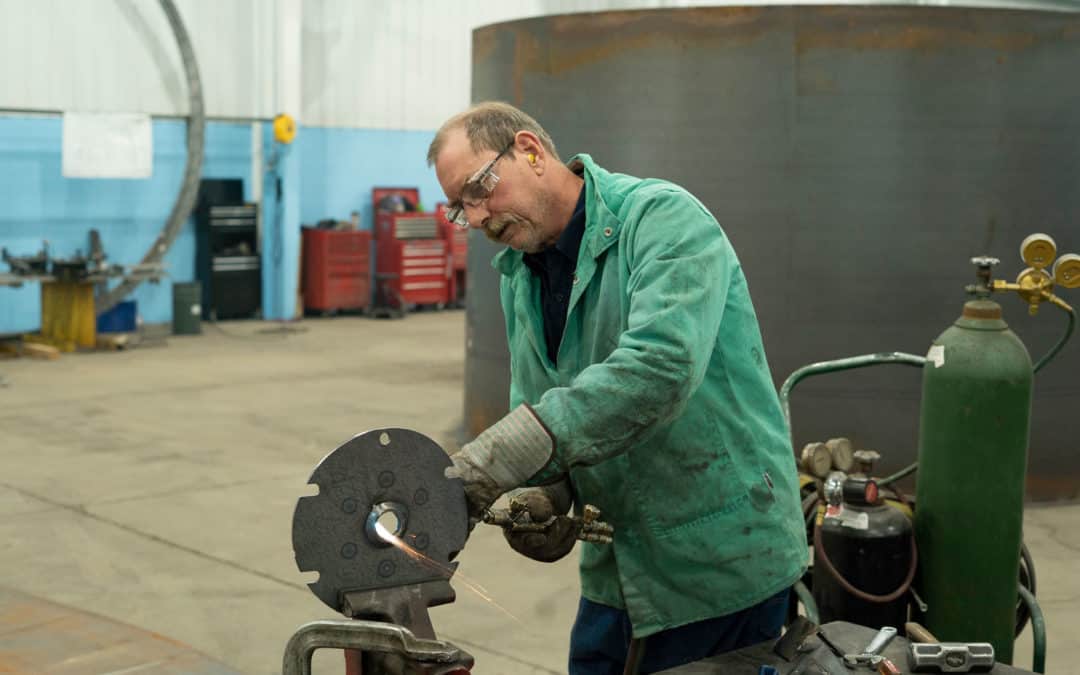
by Erin Long | Oct 2, 2019 | Hidden from Archive
After twelve and a half years at Imperial Systems and two chili cook-off trophies, Carl Callen is retiring! Carl has been a key part of Imperial Systems from its early years, working hard, mentoring new employees, and keeping Jeremiah on his toes. We caught up with Carl before his retirement party to talk about his time here and his plans for the future.
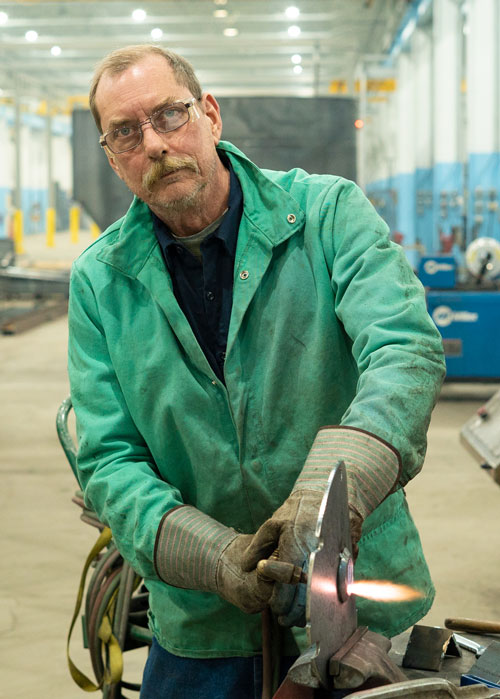 You’ve been here for twelve and a half years. What did you do before that?
You’ve been here for twelve and a half years. What did you do before that?
I’ve done every job that was out there to support my family. I spent eighteen years in the automotive industry, doing body work, painting, restoration… almost anything. I spent seven years working on railroad cars. I’ve done welding and fabricating. The automotive work turned into a hobby, and I’ve been restoring antique cars as side projects for years.
You were in the military?
I spent two years in the army, but I was behind a desk and it just wasn’t for me. I like jobs where I’m moving around and doing things with my hands. I got out and went back to doing the kind of jobs I’m good at.
What’s been the best thing about working at Imperial Systems?
This is one of the best places I’ve worked. I think one of my favorite things is giving Jeremiah a hard time. And some of the other guys, we’ve been working together for more than ten years. We’re like an old married couple, fighting and arguing all the time. I like teaching the new guys when they come in, help them learn to do things right.
What made you decide it was finally time for retirement?
My body has been telling me it was getting to be time. It’s gotten pretty hard to do all the getting up and down that I have to do all day. I’ve been working since I was a kid and it’s about time to give my knees and everything a rest.
What do you plan to do with your retirement?
I really like restoring antique cars, and I want to spend more time doing that, tinkering my garage and starting some new projects. I’ll be going to a lot of baseball games and softball games, too. My grandson is thirteen and my granddaughter is ten, so I’ll be going to watch them play. I’m looking forward to having more time to spend with them.
Any advice for the people who will follow in your footsteps here?
I’d just tell them “good luck!” and “hang in there!”. Just pay attention and learn everything you can.
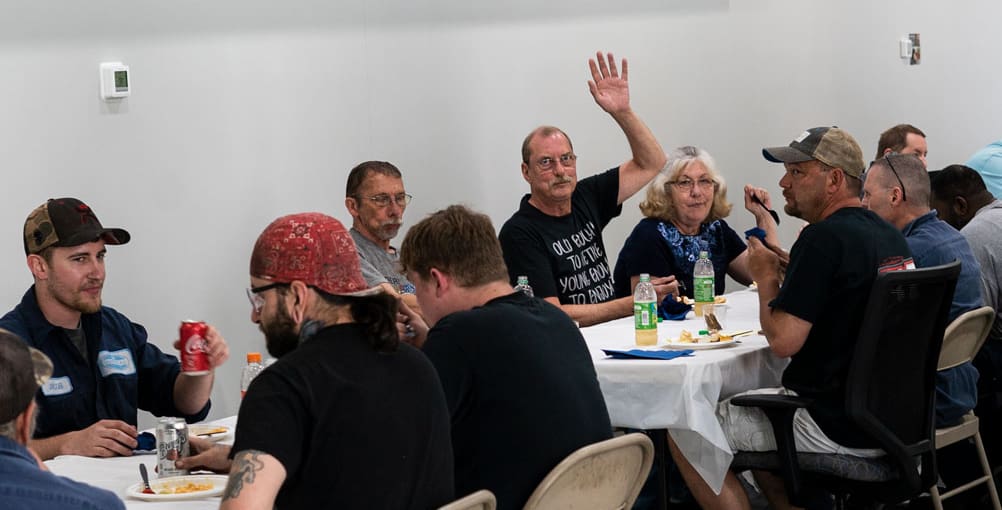
A few months after we bid Carl farewell, we caught up with him to see what he has been up to with his new found spare time.
“I’ve been working on my honey-do list,” he told us, saying that he now has the chance to do things around the house that he never had time for before. “I’ve been thinking about coming back to Imperial. At least there I get a break!” In his extra time, Carl has been enjoying fishing, car shows, and of course, sleeping in. He likes to spend time on his porch with a cup of coffee, listening to the birds in the morning and the crickets in the evening.
The whole team at Imperial Systems would like to congratulate Carl on his retirement and wish him all the best.
Read more

by Erin Long | Sep 26, 2019 | Case Studies
Problem:
A CNC machining company needed a dust collector to handle the dust from their 12 horizontal grinding mills. The company, located in northwestern Ohio, provides CNC machining services. Moreover, they produce a variety of metal parts for different industries. However, the company faced a grinder mill machine dust problem in the midst of a busy schedule.
The company’s grinding machines produce a large amount of dust. But this dust was migrating into the other departments. Furthermore, it caused quality control issues and premature wearing of machining.
The company contacted Cardinal Air Design to help them solve their grinding dust problem. The job had some special requirements, and the company needed a dust collector designed to meet their needs. Cardinal Air Design recommended an Imperial Systems CMAXX dust collector for the company’s grinder mill machine dust.
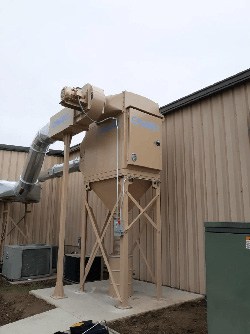 Solution:
Solution:
Cardinal Air Design created a dust collection system based around a CMAXX CM006 dust and fume collector. The six-cartridge collector also has a set of HEPA after-filters. The cartridge filters and after-filters provide extremely high-efficiency filtration for fine grinding dust.
The company also requested a dust collector to fit in with the exterior of their building. Imperial Systems powder coated the collector, including the supports and the collection drum, to match the building exterior.
Cardinal Air Design provided ductwork design and installation of the system. The company received a complete turnkey system. As soon as the installation was complete, they could turn it on and start controlling their dust problem.
Feedback on the Grinder Mill Machine Dust Collection
The company reports being very satisfied with Imperial Systems’ dust collector. They are also satisfied with Cardinal Air Design’s service and system design. The CMAXX dust collector with HEPA after-filters provides the high-efficiency filtration they need.
The matching powder coat on the Imperial Systems CMAXX is durable. But it also gives a clean, polished appearance to the building exterior. The company’s new system works without problems, and the grinder mill machine dust is under control.
Read more

by Erin Long | Sep 19, 2019 | Uncategorized
Performing regular maintenance keeps your dust collector working properly. When something goes wrong with it, you can lose money in repairs and system downtime. Some of the tips in this dust collector maintenance checklist take only a minute or two. But some do take a bit longer. Keeping up with this basic maintenance certainly prevents future problems.
Fortunately, all these maintenance steps can be performed by almost anyone with an owner’s manual. Set a schedule and check off these tasks when finished. Not only does this keep your dust collector working well, but it also provides documentation that you performed regular inspections.
Dust Collector Maintenance Checklist
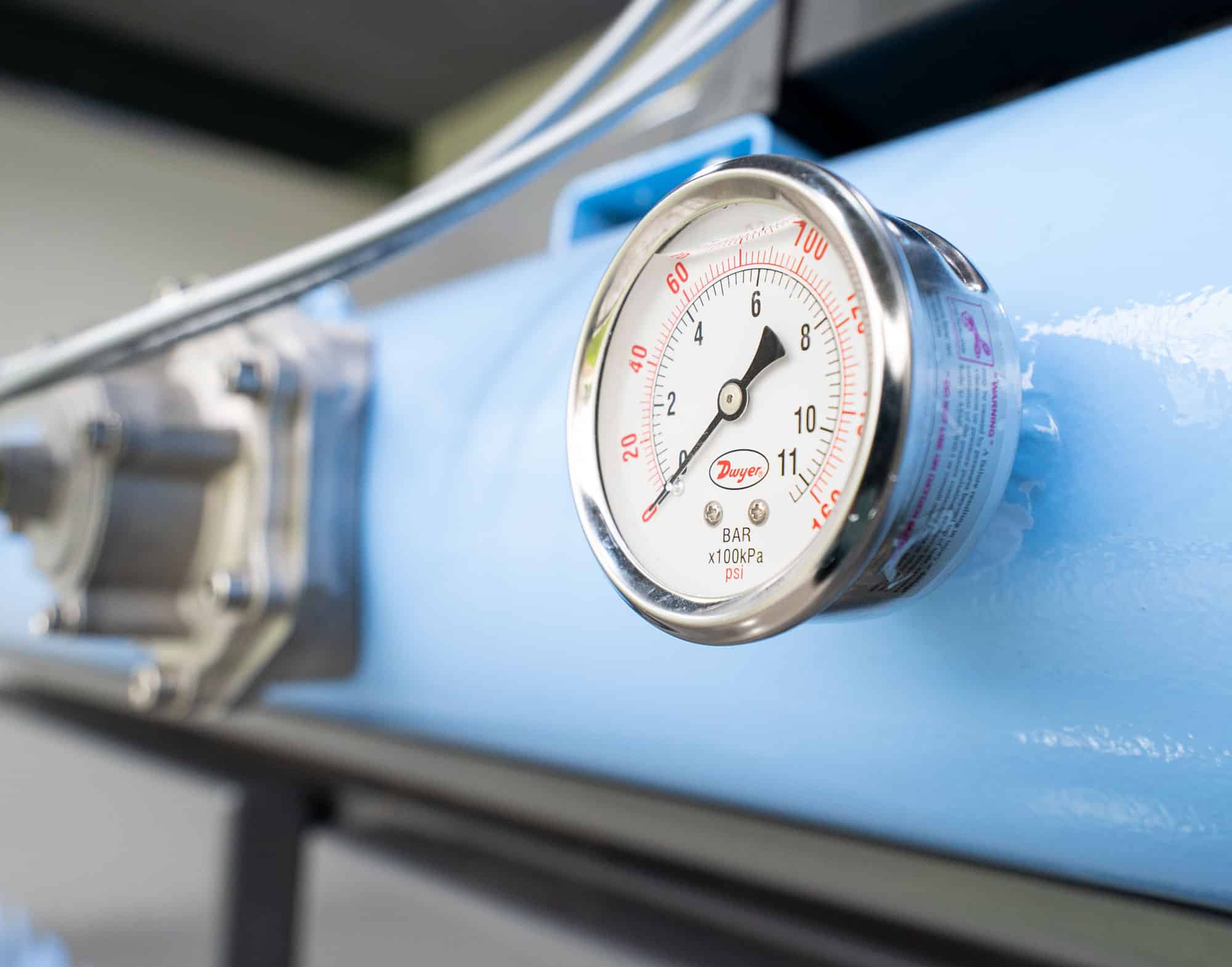 1. Record your differential pressure.
1. Record your differential pressure.
Differential pressure measures the difference in pressure between the dirty and clean air sides of the collector. High differential pressure indicates that the filters are creating a lot of resistance. When the differential pressure reaches about 5” WG, filters need to be replaced.
By monitoring differential pressure regularly, you’ll notice any changes. For example, if differential pressure suddenly drops a lot, you may have a hole in a filter or a leaking gasket. Consequently, this lets air get through more easily by bypassing the filters.
2. Check drums and hopper.
Overflowing your dust collection drum can create a mess. Worse, it can also seriously damage your dust collector. Drums must be emptied before the dust reaches the top. Fortunately, installing a dust level sensor can help monitor this.
If drums overfill, the dust can back up into the hopper and into the dust collector. Firstly, this may damage the filters. Secondly, it creates a dangerous situation where dust could ignite inside the dust collector.
3. Inspect valves and hoses.
Diaphragm and solenoid valves control the pulses of compressed air that clean your filters. These valves can become damaged or leak. This causes a loss of compressed air. It also means that filters may not get cleaned effectively.
Check these valves regularly. First, make sure that when the cleaning system pulses, all the valves work at the same time. Second, make sure that the valves open all the way and close all the way. Check that all hoses are attached and inspect them for leaks.
4. Examine door seals and gaskets.
Dust collector doors have a seal that keeps air and dust inside. This gasket around the edges of the door can become worn out or cracked. If this happens, the door will not seal properly.
Open the dust collector doors and inspect the gaskets. If they appear to be damaged, they should be replaced. Air leaks can allow dust to escape. They can also allow air to be pulled into the dust collector. This can keep the system from moving air properly.
5. Check compressed air pressure.
Pulse-jet dust collectors clean their filters with compressed air. This removes dust from the filters to keep them working well. If the compressed air pressure is too low, the pulse jet cleaning system can’t clean the filters efficiently.
If compressed air pressure is too high, filters could be damaged. Check the pressure of the compressed air regularly. It should be at the setting specified in your owner’s manual.
In addition, never take your filters out and blow them off with compressed air. This damages the filters, causing holes and tears in the material. Let the dust collector cleaning system do its job and change filters when needed.
6. Inspect airlock wipers.
Many dust collection systems include an airlock. NFPA standards often require airlocks to isolate a fire in the dust collection system. You must replace the wipers inside the airlock when they are worn out.
We recommend that you replace airlock wipers once a year, or sooner if needed. Damaged wipers will reduce the airlock’s performance. We also recommend that when you inspect and replace wipers, you also replace the wiper bearings. These wear out with use and can be damaged during wiper changes.
7. Lubricate fan bearings.
Your fan motor will normally come with an owner’s manual. This specifies which bearings need lubrication and how often. Make sure your maintenance schedule includes time to keep these bearings lubricated.
If your fan stops working or must be shut down for repairs, the dust collection system will be out of operation. As a result, you may not be able to keep up with normal production. Maintenance of the fan, including bearing lubrication, takes less downtime than a broken fan.
Your Maintenance Schedule
Like any other industrial equipment, your dust collection system requires regular maintenance. Fortunately, you can perform this maintenance using the above Dust Collector Maintenance Checklist without wasting too much time.
Maintenance also helps you identify problems. For example, if you notice the differential pressure getting high, you can order a new set of filters and have them ready for a changeout. If you notice issues with a diaphragm valve, you can replace it quickly instead of wasting compressed air.
Download PDF Checklist
ServiceMAXX Maintenance: Help for Your Dust Collector
An Imperial Systems ServiceMAXX technician can perform routine maintenance on any manufacturer’s dust collector. Nobody likes dirty work like changing filters, but you can schedule a ServiceMAXX visit and have someone else do it.
ServiceMAXX saves time so your own team can keep working while we deal with your dust collector. And if you do have a problem, the ServiceMAXX team specializes in finding and fixing dust collection system problems.
Industrial dust collection systems can run into problems. You can prevent many of them with a good preventative maintenance plan. Others may require a visit from an experienced service team to troubleshoot and make repairs.
Please contact us to schedule your ServiceMAXX visit today for help with your dust collector maintenance or repairs.
Read more
![The History of Dust & Mine Safety [Infographic]](https://www.isystemsweb.com/wp-content/uploads/2019/09/Dust-Mine-Safety-3_featuredimage-1080x675.jpg)
by Erin Long | Sep 12, 2019 | Uncategorized
This infographic looks at various coal mine disasters in the US through history and the changes that were made to standards as a result of these issues. It highlights the advancements made in Pittsburgh that lead to innovations in miner safety across the nation. It also takes a look at the effects that coal dust can have on the health of both miners and their families.

Coal dust has been the cause of some of the worst mining disasters in American history. Whether it has combusted on its own or propagated a methane explosion, coal dust can be dangerous and potentially deadly.
Upper Big Branch Mine Disaster – Raleigh County, WV • April 5, 2010 • Twenty-nine miners died
Benwood Mine Disaster – Benwood, WV • April 28, 1924 • One hundred and nineteen miners died
Castle Gate Mine Disaster – Castle Gate, UT • March 8, 1924 • One hundred and seventy-one miners died
Stag Canon No. 2 Explosion – Dawson, NM • October 22, 1913 • Two hundred and sixty-three miners died
Monongah Mine Disaster – Monongah, WV • December 6, 1907 • Three hundred and sixty-seven miners died and it is considered the worst mining disaster in American history.
Harwick Mine Disaster – Cheswick, PA • January 25, 1904 • One hundred and eighty-one miners died
Working Towards Mine Safety in Pittsburgh
In 1910, the United States Bureau of Mines purchased land in Bruceton, PA, just south of Pittsburgh. It was purchased from the Pittsburgh Coal Company for research and testing purposes. There were three main focuses at this facility: Mine Health, Mine Safety, and Disaster Prevention.
National Mine Safety Demonstration – Forbes Field, Pittsburgh • October 30th, 1911 • 15,000 attendees
International Conference of Representatives of Mining Experiment Stations – Pittsburgh, PA • September 14-21, 1912 • Attendees included representatives from Austria-Hungary, Belgium, German, and Great Britain.
Coal Dust in Post-WWII America
Coal dust explosion research expanded to industrial and agricultural dust after WWII with the National Defense Research Committee. In 1969, the Federal Coal Mine Health and Safety Act:
- Required more inspections of mines
- Strengthened safety standards and adopted health standards for the first time
- Provided compensation for miners with black lung
- Was signed by Nixon
In 1970, mine owners began taking dust samples. By the end of that year, the Bureau of Mines had issued 714 excessive violation levels and 1,589 failure-to-initiate sampling notices.
Later in the seventies, the 1969 Coal Act:
- Mandated further research on occupational lung disease factors
- Provided information on pneumoconiosis and other respiratory ailments
- Improved mandatory health standards
From 1973 to 1999, Coal Workers’ X-Ray Surveillance Program showed the prevalence of pneumoconiosis in miners with 25 or more years on the job had fallen by 31%.
Read more about mining dust collection.
Read more



 You’ve been here for twelve and a half years. What did you do before that?
You’ve been here for twelve and a half years. What did you do before that?

 Solution:
Solution:
 1. Record your differential pressure.
1. Record your differential pressure.
![The History of Dust & Mine Safety [Infographic]](https://www.isystemsweb.com/wp-content/uploads/2019/09/Dust-Mine-Safety-3_featuredimage-1080x675.jpg)
